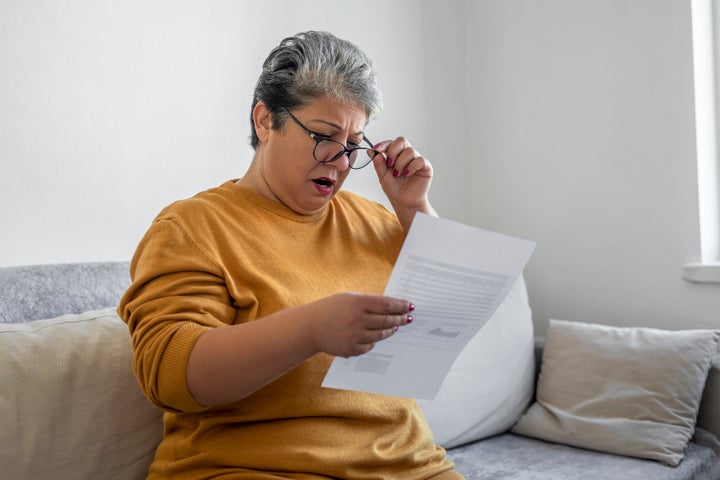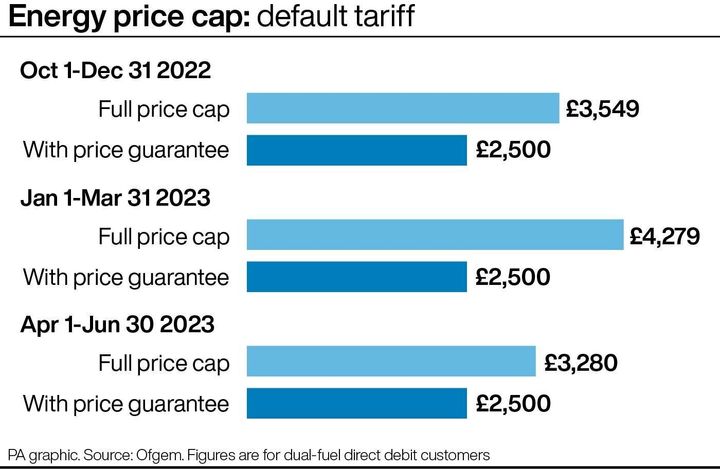
Ofgem has just announced that it is cutting the energy price cap – but what impact will that actually have on your bills?
The UK’s energy regulator will be reducing the cap on gas and electricity to £2,074 in July, at the end of the current quarter.
While this is welcome news after months of climbing energy costs causing nationwide concern, the 27 million households in the UK set to be impacted shouldn’t expect too much of this change reflected in their bills.
What is the energy price cap?
To refresh your memory, the energy price cap is controlled by the UK’s regulator Ofgem.
The cap is the rate most consumers pay on standard energy tariffs – it’s a way for Ofgem to limit the rate suppliers can charge people for each unit of gas and electricity.
But, it does not cap the total bill. So if you use more than the average amount, you will pay more than the cap.
It’s worth remembering Northern Ireland also has a different energy market with a different system of regulation – prices there have generally been lower than the rest of the UK throughout the energy crisis.
The cap does not help businesses, charities or any public sector organisations, only households.
What does this change in the energy price cap actually mean?
On the surface, this sounds like a substantial change.
The cap was at £3,280 in the last three months (having been at staggering highs above £4,279 in the quarter before that), so this decrease to £2,074 is a big deal.
However, consumers have not had to pay the really high rate ever since the government introduced the energy price guarantee.
Downing Street set the typical bill at £2,500 last autumn, to reduce costs for the consumer by limited the amount suppliers can charge per unit of energy used.
That means annual bills are actually only falling from around £2,500 to £2,074 – a decline in £426.
The government also gave every household £400 and divided it into monthly payments between October and April.
But, this scheme is ending too. So that means the actual difference to your bills is only around £26 – and people will still be paying almost the exact same amount as they were last winter.
The BBC also pointed out Ofgem’s announcement will probably only cover a quarter of the year (July to September) that will probably work out to a saving of £6.50.
MoneySavingExpert Martin Lewis explained that overall bills will be the same this winter as the last one, despite this change, because we won’t have the government support.
And, he told BBC Radio 4: “For every £100 you pay now, you will likely be paying £80-£85 on energy from July.
“That is real manifest drop in energy bills. But the truth is – that’s probably it.”
He added: “People will still be paying double what they used to pay before the energy crisis hit.”
Back in October 2021, the typical UK household paid £1,271 a year for energy.

Why is the price cap going down?
The energy crisis was triggered by Russia’s decision to restrict its energy exports to Europe ahead of its invasion of Ukraine.
The West then stopped buying Russia’s energy exports altogether.
But, the wholesale price of energy around the world has declined, which is why the cap has fallen.
Unfortunately, it’s not expected to go down again later this year.
Cornwall Insight, energy consultancy, said that the price cap could reduce to £1,960 in October, but rise again in £2.045 from January 2024.
It also warned that bills will not go back to pre-pandemic levels.
Still, Ofgem chief Jonathan Brearley said: “After a difficult winter for consumers, it is encouraging to see signs that the market is stabilising and prices are moving in the right direction.”
What happens next?
This changes to the cap is being seen as a sign that things perhaps aren’t getting any worse – but it’s not the huge dose of help we might have been hoping for.
After all, about 6.5 million households are in fuel poverty right now according to campaigners at National Energy Action, and around 480,000 households which use communal heating systems are not protected by the price cap anyway.
But, there is speculation that energy suppliers might introduce deals to secure more customers.
Campaigners are also calling the government to increase energy efficiency programmes, help with energy debt and switch to cheap, renewable energy as soon as possible, to reduce the UK’s vulnerability to fluctuations in the fossil fuel market.
Energy secretary Grant Schapps claimed he was “relentlessly focused” on moving the country away from foreign fossil fuels, and focusing up on “cheaper, cleaner and more secure energy”.
He added: “We’ve spent billions to protect families when prices rose over the winter covering nearly half a typical household’s energy bill – and we’re now seeing costs fall even further with wholesale energy prices down by over two-thirds since their peak as we’ve neutralised Putin’s blackmail.”